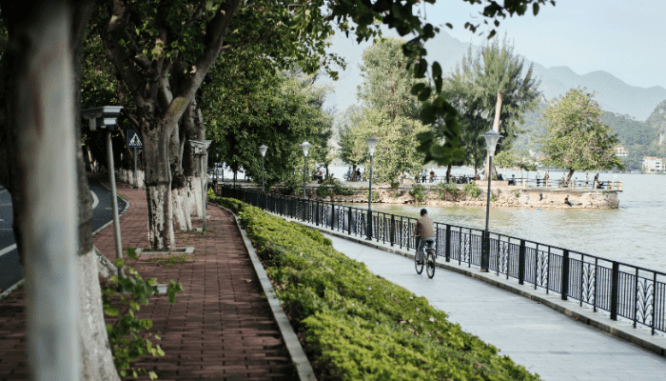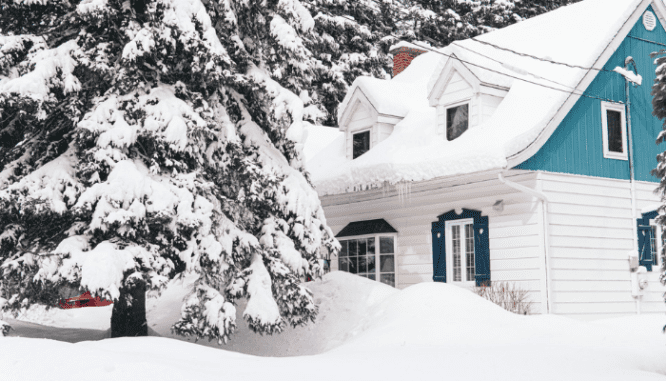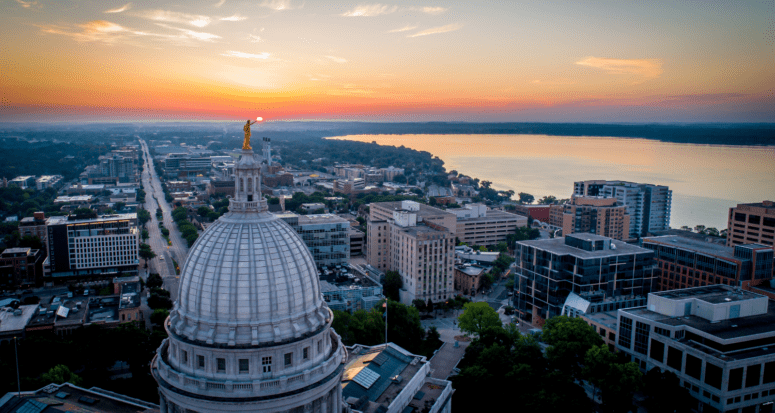Where City Life Meets the Great Outdoors: How to Buy a House in Madison
- Published on
- 5-6 min read
-
 Courtney DuChene Contributing AuthorClose
Courtney DuChene Contributing AuthorClose Courtney DuChene Contributing Author
Courtney DuChene Contributing AuthorCourtney DuChene is a freelance writer covering business, personal finance and real estate, based out of Philadelphia.
At HomeLight, our vision is a world where every real estate transaction is simple, certain, and satisfying. Therefore, we promote strict editorial integrity in each of our posts.
When people begin their home search they often face an important decision: Would they rather live in a city bustling with bars, restaurants, and a vibrant arts and culture scene, or is it more important to live close to nature, where they can go for long hikes and spend the weekends kayaking in local lakes or rivers?
But what if you could find a home that combines city life with a plethora of gorgeous parks and beaches?
Madison, Wisconsin, combines the perks of living in a big city with the beauty of the natural world more commonly associated with rural areas. The city ranks on Livability’s top 100 places to live, largely due to its local food scene, 5,000 acres of parkland, 11 beaches, short commute times, and the state’s low cost of living. The average Madison resident commutes only 15 minutes, with many opting to walk or bike — rather than drive — to work.
If you’re ready to buy a house in Madison, get ready for a competitive real estate market where houses sell in less than a month. Madison sellers, like the city itself, are family-oriented and a personal touch like a buyer love letter, coupled with a competitive financial offer, can go a long way in helping buyers secure the home of their dreams.
To assist you with your home search, we’ve compiled this complete guide on how to buy a house in Madison, with help from local real estate experts whose insights and advice can help make your offer stand out amongst the crowd. We’ve also consulted local newspapers and available data to help you better understand local real estate trends.

Why are buyers sold on Madison?
Homes are affordable and hold their value
Home values in Madison have risen for the past seven years. In 2019, the average home price topped $300,000. In 2020 sales in Dane County, where Madison is located, were up 19% over 2019, and the median price jumped 10%.
“It’s always been a desirable place to live. It’s a beautiful city,” says Dan Chin, a top real estate agent in Madison with eight years of experience in the field. “We have quite a bit of pent-up demand.”
In addition to rising home values, the average Madison home is slightly less expensive than $313,000, the U.S. median home price in February of 2020, according to the National Association of Realtors, making it a great place for people to find an affordable home that will grow in value over the years.
A neighborhood for everyone
Madison is a smaller city at just over 250,000 residents, but that doesn’t mean it doesn’t have plenty of attractions. Home to the state capital and the University of Wisconsin-Madison, the city has plenty of restaurants and small businesses. Its top neighborhoods cater to everyone from young professionals to families. The market is dominated by single-family homes, but condos and townhouses can be found in neighborhoods closer to the university and the state capital.
“There’s a very high quality of life, with the lakes and state parks and the bike trails,” says Madison home inspector Jill Hauk, who’s lived in the area for 16 years. “And there’s a good food scene, good beer brewing scene.”
Willy Street
Also known as Marquette, this neighborhood located on Madison’s Williamson Street is home to some of the city’s best local shops, restaurants and live music venues, including a pig in a fur coat Mediterranean restaurant and Crystal’s Corner, a bar that frequently features live music. While townhomes and condos can be found in the area, it’s best known for its historic homes with a variety of architectural styles, ranging from Greek Revivals to Arts and Crafts bungalows. The neighborhood’s young, bohemian vibe is perfect for professionals just starting out.
Tenney-Lapham
One of Madison’s largest neighborhoods, Tenney-Lapham is also extremely livable. AreaVibes gives the neighborhood an excellent rating, earned by its upscale atmosphere. High-rises, condos, and apartments are common in this neighborhood as it grows to match the rest of Madison’s East Side. Music lovers will embrace the area as it is home to two of Madison’s best venues — the High Noon Saloon, which features mostly indie acts and local bands, and Breese Stevens Field, which has hosted shows from country music star Darius Rucker to pop rock duo Hall & Oates.
Wexford
Wexford is considered the top neighborhood in Madison, according to AreaVibes. Wexford offers residents easy access to public transit, great schools, and proximity to several large parks, including Stricker’s Pond Conservation Park. The close-knit neighborhood is ideal for families who can enjoy events like the annual Fourth of July Parade and Picnic and the end-of-summer potluck picnic.
Westmorland
If you want to buy a house in Madison to take advantage of the city’s wide array of outdoor recreational offerings, then Westmorland is the neighborhood for you. The area is named for Westmorland Park, which offers residents nearly 12 acres of green space and an extensive network of bike trails linking it to University of Wisconsin-Madison’s arboretum and downtown Madison. Westmorland is also home to seven of the city’s Lustron homes — a unique style of home made from prefabricated porcelain steel.
Shorewood Hills
Shorewood Hills is another neighborhood built for outdoor lovers. Dedicated to wildlife preservation, Shorewood Hills is home to nine parks and shares a border with Lake Mendota. It’s not uncommon to see residents kayaking and water-skiing as well as hiking and biking. Its A+ rated schools make it an excellent choice for settling down and raising a family.
Vilas
Vilas is one of Madison’s historic neighborhoods. With its abundance of greenery and lines of Victorian and Tudor homes, you’d never know that this quiet, family-oriented neighborhood is located on the edge of the University of Wisconsin-Madison’s campus. Walking to the Henry Vilas Zoo or taking a jog along the 6-mile Lake Wingra loop are just a few of the neighborhood’s many perks.
Plenty of outdoor recreation
For those looking for a city that provides access to the great outdoors, Madison should be a top contender. The city is home to four lakes, numerous parks, and a plethora of biking and walking trails. Residents can be found water skiing or kayaking on Lake Mendota and strolling through 16 acres of flowers, trees, and wildlife at Olbrich Botanical Gardens.
A perfect place to raise a family
In addition to great parks and an active downtown, Madison and the surrounding area sport a number of A-rated school districts, making it a perfect city to raise a family. Waunakee High School, which is the No. 1 school in the Madison metro area, is the 10th best school statewide, per U.S. News and World Report rankings, and the top five districts in the area have an A rating on Niche.

Navigating the Madison housing market
Madison has long been a seller’s market, but in this past year rising home values and recent seller behavior have made the market even more aggressive.
In 2020 sellers put off listing their homes due to the COVID-19 pandemic, creating a shortage for buyers. In fact, available inventory in Madison dropped from a 2.6-month supply to 1.6 months during 2020.
While the housing market is competitive in Madison year-round, it is especially active between March and September, when many people find themselves moving so their children can attend school in a top district. After school is out in June, Madison homes sell for 4.33% more than the yearly average. “The market values are driven primarily by the school district. So, you’re going to move after school is out and before school starts,” Chin says.
If you want to buy a house in Madison, February and March are the best months to make your purchase. In March, homes typically sell for 4.78% less than the yearly average.

Things to consider before buying in Madison
Older houses
At 44 years, the median age of Madison homes is similar to the median age of homes across the U.S. (43 years). If you want to buy a house in Madison that’s on the older side, keep in mind that it may require some extra maintenance and repairs. Regardless of whether you’re eyeing a historic home or newer construction, it’s vital that you get a home inspection to identify any potential issues before you buy.
Insurance considerations
Madison gets an average of 42 inches of snow a year, 14 inches higher than the U.S. average, creating picturesque winters full of activities like sledding and cross-country skiing. However, the snow — and hail in rainy months — can be tough on a home’s roof. “The roofs can take a little bit of a beating,” Hauk says. Fortunately, homeowner’s insurance policies typically cover repairs for weather-related roof damage.
With four lakes, some of Madison’s homes are located in FEMA floodplains and homeowners who live in those areas will need to purchase flood insurance. In Wisconsin, the average cost for this additional coverage is $973 per year. City zoning ordinances limit development in flood-prone areas, however, so few homes fall into the 100-year floodplain, FEMA says.
Elevated radon levels
South central Wisconsin, where Madison is located, is known for having higher-than-average levels of radon — a naturally occurring, radioactive gas — and one in 10 homes statewide has high levels of the gas. As a result, potential buyers are encouraged to get a radon test. These tests are typically inexpensive — kits can be purchased for as little as $10 — and they can be added onto a standard home inspection.
If testing shows high radon levels, there’s no reason to fret. An EPA-licensed inspector will typically provide a free remediation estimate and they often guarantee that radon levels will be acceptable if work is done on the house. The cost of radon mitigation is usually around $1,200. As is typical in most areas where radon is common, sellers usually will pick up the cost for radon mitigation if needed, and many will have tested the home before putting it on the market.
Find a top buyer’s agent in Madison
Working with a real estate agent during your home search is a must for navigating Madison’s housing market. Top buyer’s agents in Madison complete 1.8 times more transactions than an average agent and save buyers $46,386.
In this competitive landscape, buyers need to be aggressive if they want to buy a house in Madison. One way buyers can get an edge is by making an offer before a home is publicly listed. Chin says in the first quarter of 2021, 29 of the accepted offers for his firm were on homes that were not yet on the market.
“We’re writing sight-unseen offers to get an edge up on the competition.”
Chin says another way buyers can make sure their offer is competitive is by including an escalation clause, which allows a buyer to increase their offer up to a set amount if a seller receives another offer that is higher than the buyer’s initial offer.
Additionally, buyers can gain an advantage by writing a “seller love letter.” In these letters, a buyer details what they love about the home and they provide reasons why the seller should select them. In family-friendly Madison, seller love letters can appeal to empty-nesters, especially if the buyer details how they plan to grow their own family in the home.
“Most sellers want to hear that a buyer is going to love their home, to take good care of it,” Chin says. And who can blame them?
Header Image Source: (Szymon Raczkowiak / Shutterstock)

